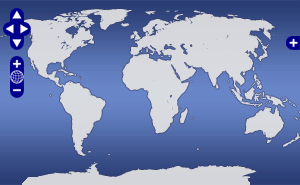Sediment P-wave velocity model (MATLAB format) derived from full-waveform inversion along the Oregon Transect (Line 1) and Washington Transect (Line 2) of the Juan de Fuca Ridge-to-Trench study
This data set consists of P-wave velocity model of the sediment section and depth of seafloor and basement from full-waveform inversion of multichannel seismic data acquired along the Oregon Transect (Line 1) and the Washington Transect (Line 2) of the Juan de Fuca Ridge-to-Trench study. The model is provided in MATLAB format with columns as defined below and within the file. The file content is two Matlab structures (OR_FWI_model and WA_FWI_model) with the following fields: x—model distance in horizontal direction (unit: m); z –model distance in vertical direction (unit: m); lat –latitude; lon –longitude; vel –velocity model (unit: m/s); vel_grad –velocity gradient model (unit: s-1); seafloor –seafloor depth along the line (unit: m); basement –basement depth along the line (unit: m). The seismic velocity model and velocity gradient model is referenced in Shuoshuo Han, Adrien Arnulf, Juan Pablo Canales, Suzanne Carbotte, Mladen Nedimović: Décollement initiation at the Cascadia Subduction Zone from Full-Waveform Inversion (in prep.). The data set was generated as part of the project called Inferences on Cascadia Deformation Front and Plate Interface Properties from Advanced Studies of Active Source Seismic Data. Funding was provided through NSF Award OCE16-57839.
Han, Shuoshuo
Investigator
UTIG
Arnulf, Adrien
Investigator
UTIG
Canales, JuanPablo
Investigator
WHOI
Carbotte, Suzanne
Investigator
LDEO
Nedimovic, Mladen
Investigator
Dalhousie
Device Info
Seismic:
LDEO
Platform
Marcus G. Langseth (Array)
LDEO
Awards
Data DOI
Quality
2
The data have been processed/modified to a level beyond that of basic quality control (e.g. final processed sonar data, photo-mosaics).
License
Data Files
Data Citation Information
ISO/XML Metadata
Expand

 Map View
Map View

